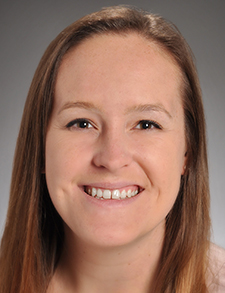
Dr. Owerko
Presenters: Paul Scalici, MD, Meghan Hofto, MD, MPH, DTMH, Lauren Nassetta, MD, James Gambrell, MD
During this PHM 2023 session, four pediatric hospitalists tackled a broad topic that many clinicians struggle to stay up to date with—that is, what are all the variably-named substances our teens are using and what do they do to their growing bodies and minds?
Our “trip” started with readily available over-the-counter products like dextromethorphan (a.k.a. Skittles, Red Devils) and antihistamines (H1 blockers like Benadryl) whose dose-dependent stimulant and dissociative effects carry risks of serotonin syndrome and cardiac toxicity, respectively.
The next category was inhalants, products like markers, glues, aerosols, and gasoline that are often found in the home and are particularly attractive to younger adolescents for the short-acting, low-perceived-risk high achieved through sniffing, huffing, bagging, or doing “whippets” with nitrous oxide.
The presenters then moved on to discuss marijuana, the number one most commonly used federally illegal drug in the U.S. The mind-altering compound delta-9-tetrahydrocannabinol (THC) comes from the naturally occurring cannabis plant, along with hundreds of other components like cannabidiol (CBD). Known by various slang terms like pot, weed, reefer, ganja, grass, herb, and Mary Jane, marijuana can be smoked in a joint, blunt, pipe, or bong, electronically vaped in its oil form, made into wax for “dabbing,” or ingested as an edible. Spice and K2 are synthetic marijuana products made to mimic THC, but do not show up on urine drug screens and are almost entirely unregulated, leading to more adverse reactions. The toxidrome is generally “downer” with slowed cognition and decreased anxiety, but effects may vary based on route and specific subtype of marijuana consumed. The presenters concluded this section by discussing cannabis use disorder, which, contrary to the popular belief that THC is not addictive, does impact about 10% of frequent users and can lead to withdrawal symptoms.
The next segment featured a series of quick hits covering controlled substances and hallucinogenics. Some highlights include:
- An individual ingesting “lean” or “purple drank” should be monitored for respiratory depression and sedation related to the cough syrup concoction containing opioid-derived codeine.
- Ecstasy, Molly, and “X” all refer to 3,4-Methylenedioxymethamphetamine, or MDMA, a compound whose sympathomimetic toxidrome makes it appealing as a “club drug,” but whose heightened thirst drive can lead to hyponatremia from water intoxication.
- Xylazine (or “tranq”) is a non-opioid sedative meant for use as a veterinary tranquilizer but has recently been found in drug mixtures with fentanyl and can cause necrotic soft tissue injury.
- The psychedelics peyote (buttons, cactus), psilocybin (shrooms, magic mushrooms), ayahuasca, and ibogaine are being explored as treatments for mental illness, given they cause introspection and hallucinations, but results are not universally predictable, and their use may be risky.
To conclude, the presenters reviewed urine drug screens, noting that common medications like ibuprofen and diphenhydramine can cause false positives on immunoassay, and therefore mass spectrometry is helpful for confirmation. They wrapped up their session by discussing the racial inequalities underlying the War on Drugs of the 1970s to 1980s and its direct impact on U.S. incarceration rates, expansion of prison systems, and militarization of police forces.
Key Takeaways
- Common household products and over-the-counter medications can be used and abused by children and adolescents looking for a “low risk” high.
- For most drugs of abuse treatment of acute intoxication is largely supportive, with a focus on monitoring airway, breathing, and circulation, and using benzodiazepines for agitation.
- Know what is on your local urine drug screen and confirm results with a comprehensive panel, given the risks for false positives or negatives with common products like ibuprofen.
Dr. Owerko is a second-year pediatric hospital medicine fellow at the Medical College of Wisconsin/Children’s Wisconsin in Milwaukee.

